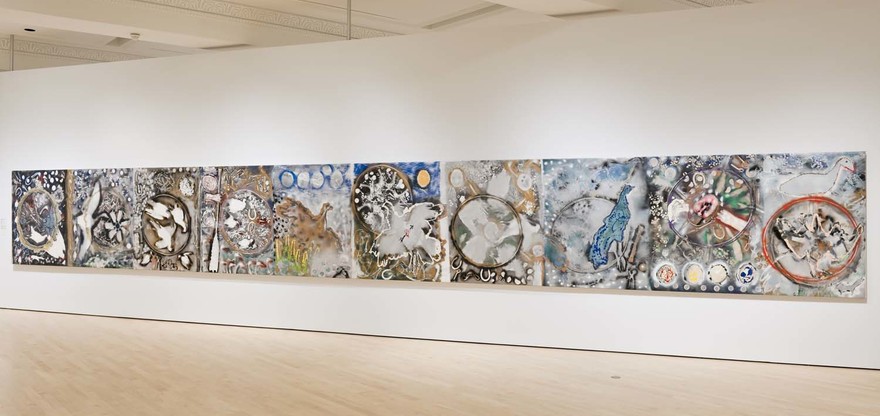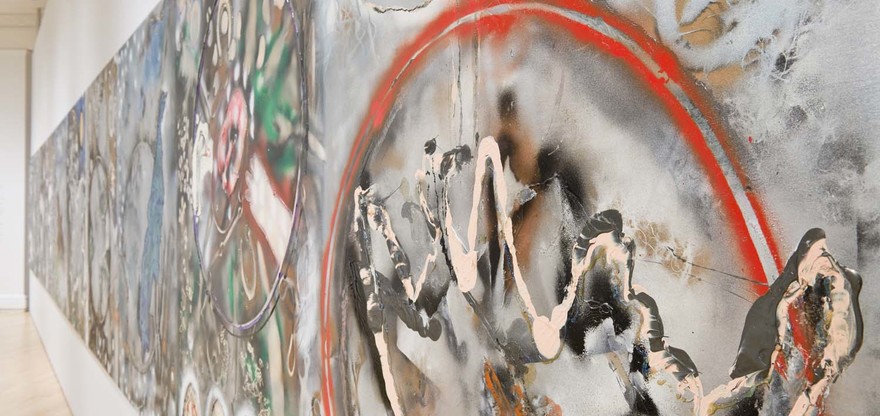A new hanging of this monumental fresco by the famous artist is on view in gallery 3 of the Gérard Morisset pavilion.
Take advantage of this opportunity to see, or see again, this work in an exhibition gallery before it is moved and installed in a public area of the future museum complex, the passage which will connect the Central pavilion with the Pierre Lassonde pavilion in 2016.
Since it was acquired in 1996, nearly 1,500,000 people visiting the MNBAQ have viewed the largest work ever made by Jean-Paul Riopelle, the largest work ever acquired by the Musée. The work is a narrative sequence of 30 paintings forming a triptych more than 40 metres in length. It is in a sense Riopelle’s legacy work, which he began in his studio on Île-aux-Oies in November 1992 after learning of the death in Paris of his former companion, the American painter Joan Mitchell (1926-1992). You can be the next person to appreciate Jean-Paul Riopelle’s genius and burning passion.
A quick look back at the brief history of Rosa
The title of this piece comes from the anecdote according to which Riopelle, when they were together, called Mitchell his “Rosa Malheur” (“Rosa Misfortune”), a reference to Rosa Bonheur (1822-1899), a brilliant painter of animals whose last name means “good fortune”. Rosa was also the first name of the German Communist Party activist Rosa Luxemburg, who was famous for her coded prison letters.
This giant colourful fresco, made using spray paint, takes the form of a sequence of animal paintings replete with everyday objects, most often depicted in silhouette, creating atmospheric effects by means of a celestial technique. Its brief history is this: the work was first exhibited in Mont-Rolland, in the Laurentians region of Québec, in April 1993. For more than five days, a hundred or so friends of the artist, art lovers and passers-by got an advance viewing of the work. In the fall of that same year, it was exhibited in a Montréal gallery, Michel Tétreault Art Contemporain. After a period at the La Roche-Guyon chateau not far from Paris in 1995, it was shown at the MNBAQ (then known as the Musée du Québec) for five weeks in the spring of 1996, when it was viewed by 33,000 visitors. Through an agreement with Loto-Québec, the work was finally acquired as a gift, at the same time as the purchase of two other major works by Riopelle, Pangnirtung (1977) and La Victoire et le Sphinx (1963). Initially intended to be exhibited for twenty years at the Hull Casino, in the end it spent only three years in the Outaouais region before being brought back to the MNBAQ in May 2000 to ensure its permanent presence. That year, the Riopelle – Loto-Québec gallery opened in the form it has been known to the present day.





Give us your feedback